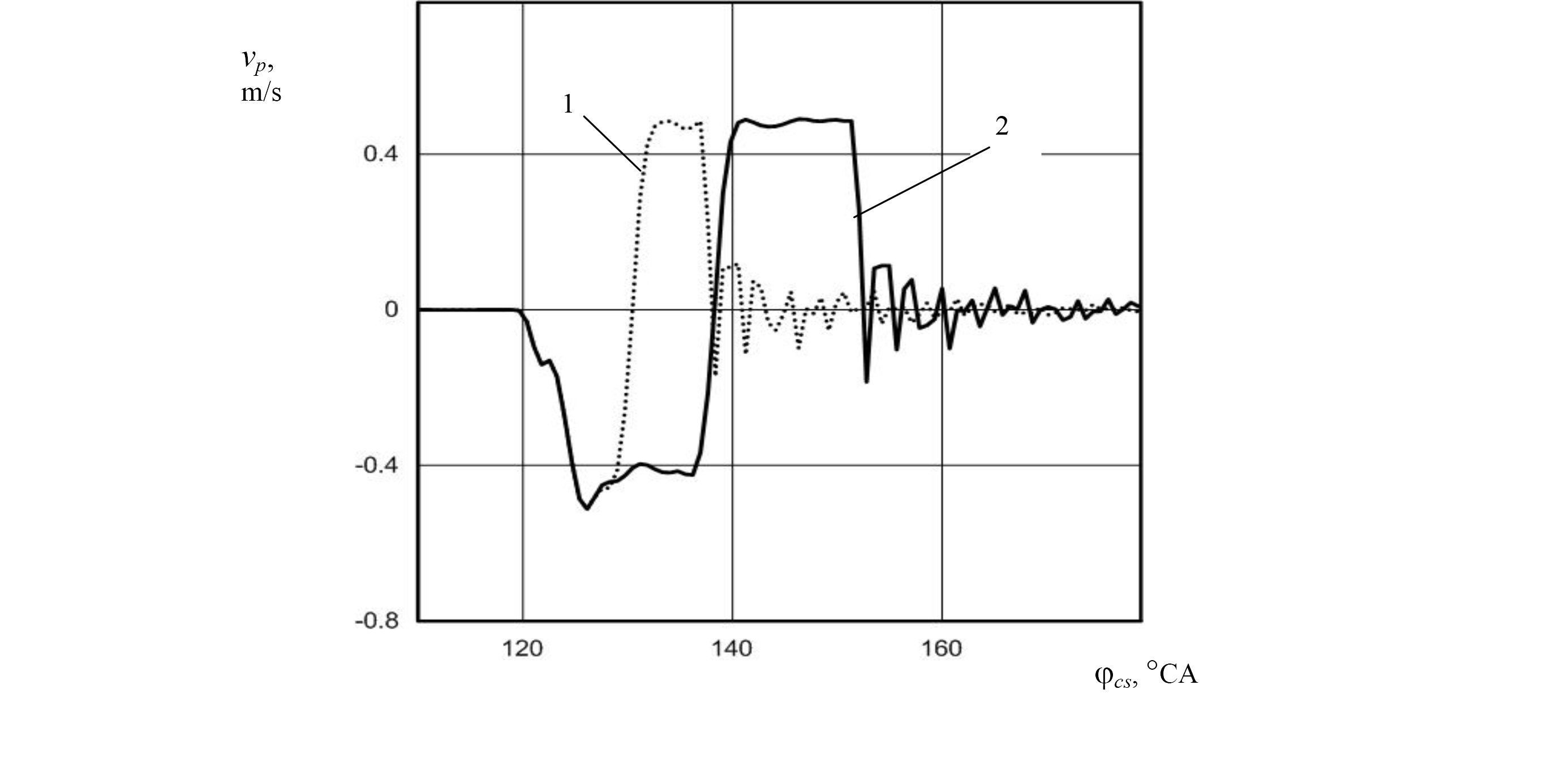Розробка й аналіз навантажувальної характеристики акумуляторної системи впорскування палива Common Rail двигуна 50 RT-flex
DOI:
https://doi.org/10.15587/2706-5448.2023.286277Ключові слова:
система Common Raіl, навантажувальна характеристика, параметри подачі палива, блок керування, кінематика елементівАнотація
Об'єктом дослідження є гідродинамічні процеси в системі паливоподачі суднового малообертового дизеля типу RT-flex з акумуляторною системою упорскування палива Common Raіl. Проблемою, що вирішувалася, є забезпечення ефективного використання дизелів зазначеного типу за рахунок удосконалювання експлуатації їх паливної апаратури.
В роботі представлено результати імітаційного моделювання процесу впорскування акумуляторною системою подачі палива Common Rail двигуна 50RT-flex. На основі функціональної схеми системи складено розрахункову модель, яка надає опис роботи основних блоків системи.
Навантажувальна характеристика паливної апаратури побудована в традиційному варіанті – параметри паливоподачі залежать від навантаження двигуна при постійній частоті обертання. Для системи, що розглядається, керуючим елементом є клапанний вузол, що з'єднує блок керування впорскуванням (БКВ) з форсунками. Параметрами навантажувальної характеристики в даному дослідженні є режими з постійною частотою обертання двигуна n=124 об/хв і зміною кута відкриття регулюючого клапана в діапазоні – jv=6,6–14,4 °CA.
Більш детально розглянуто параметри пристроїв, які значною мірою визначають характеристики паливоподачі та якість робочих процесів дизельного двигуна. Таким елементом системи є блок керування впорскуванням БКВ, робочим органом якого є дозуючий поршень. Основними параметрами його роботи при подачі палива є величина та швидкість ходу. Для навантажувальних характеристик в прийнятому діапазоні кута відкриття клапана управління jv від 6,6 до 14,4 град. (в 2,18 рази різниця) хід поршня становив hp=4,29–8,61 мм (в 2,0 рази більше). При цьому залежність hp від jv є лінійною.
Областю використання даних, отриманих у ході дослідження, є суднові екіпажі й берегові служби, що забезпечують експлуатацію суден. Матеріали введено в практику й уже використовуються в різних формах навчального процесу вищого навчального закладу. Дані дослідження корисні розроблювачам і будівельникам суднових дизелів розглянутого класу.
Посилання
- Hummel, K., Boecking, F., Groß, J., Stein, J.-O., Dohle, U. (2004). 3. Generation Pkw-Common-Rail von Bosch mit Piezo-Inline-Injektoren. MTZ – Motortechnische Zeitschrift, 65 (3), 180–189. doi: https://doi.org/10.1007/bf03227169
- Egger, K., Warga, J., Klügl, W. (2002). Neues Common-Rail-Einspritzsystem mit Piezo-Aktorik für Pkw-Dieselmotoren. MTZ – Motortechnische Zeitschrift, 63 (9), 696–704. doi: https://doi.org/10.1007/bf03226642
- Grekhov, L. V., Ivashchenko, N. A., Markov, V. A. (2004). Fuel equipment and diesel control systems: A textbook for universities. Moscow: Legion-Avtodata, 344.
- Marchenko, A. P., Prokhorenko, A. A., Meshkov, D. V. (2006). Mathematical modeling of processes in the electro-hydraulic nozzle of the CR system in the matlab/simulink environment. DVS, 1, 98–102. Available at: https://scholar.google.com/citations?view_op=view_citation&hl=ja&user=lf0WF-4AAAAJ&citation_for_view=lf0WF-4AAAAJ:IjCSPb-OGe4C
- Bosch, R. (2002). Dieselmotor- Management: vollständige überarbeitete und erweiterte Auflage. GmbH, 443.
- Fomin, Yu. Ya., Nikonov, G. V., Ivanovsky, V. G. (1982). Diesel fuel equipment. Moscow: Mashinostroenie, 168.
- Ping, W., Chunjun, J., Bin, T., Xigeng, S. (2010). Effect of Common Rail System on Vehicle Engine Combustion Performance. 2010 International Conference on Optoelectronics and Image Processing. doi: https://doi.org/10.1109/icoip.2010.280
- Xiao-Hui, Z., Wen-Xing, Q. (1999). The effect of fuel injection system parameters on combustion noise and performance. Vehicle Engine, 123 (5), 5–9.
- Kohketsu, S., Mori, K., Kato, T., Sakai, K. (1994). Technology for Low Emission, Combustion Noise and Fuel Consumption on Diesel Engine. SAE Technical Paper Series. doi: https://doi.org/10.4271/940672
- Wang, P., Xiao-Hui, Z., Wen-Xing, Q. (2006). Experimental Study on Diesel Engine by Electronically Controlled Common Rail Fuel Injection System. Journal of Thermal Science and Technology, 3 (5), 241–244.
- Yang, L., Fuel, B., Xiao, W. Y. (2004). Pilot Injection Control of High Pressure Common Rail Diesel Engine. Diesel Engine, 3, 1.
- Liu, Y., Zhang, Y., Tian, H., Qin, J. (2008). Research and applications for control strategy of high-pressure Common Rail injection system in diesel engine. 2008 IEEE Vehicle Power and Propulsion Conference. Harbin. doi: https://doi.org/10.1109/vppc.2008.4677448
- Gou, C., Cai, R., Hong, H. (2006). An Advanced Oxy-Fuel Power Cycle with High Efficiency. Proceedings of the Institution of Mechanical Engineers, Part A: Journal of Power and Energy, 220 (4), 315–325. doi: https://doi.org/10.1243/09576509jpe215

##submission.downloads##
Опубліковано
Як цитувати
Номер
Розділ
Ліцензія
Авторське право (c) 2023 Edward Polovinka, Igor Tabulinsky

Ця робота ліцензується відповідно до Creative Commons Attribution 4.0 International License.
Закріплення та умови передачі авторських прав (ідентифікація авторства) здійснюється у Ліцензійному договорі. Зокрема, автори залишають за собою право на авторство свого рукопису та передають журналу право першої публікації цієї роботи на умовах ліцензії Creative Commons CC BY. При цьому вони мають право укладати самостійно додаткові угоди, що стосуються неексклюзивного поширення роботи у тому вигляді, в якому вона була опублікована цим журналом, але за умови збереження посилання на першу публікацію статті в цьому журналі.








